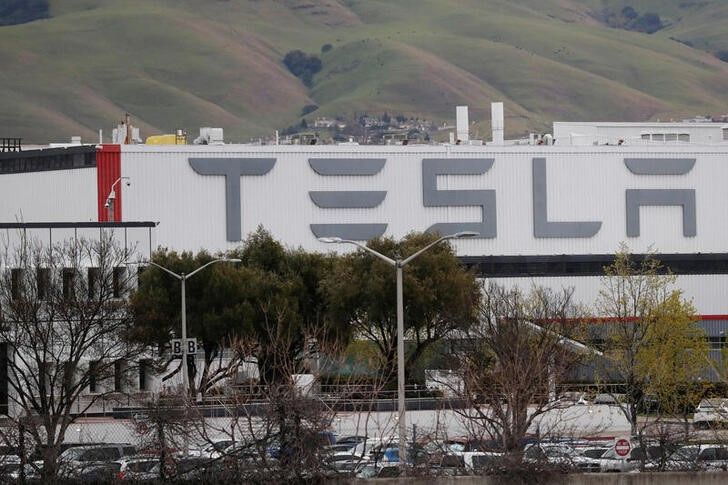Photo Credit: Getty Images
Despite its well-publicized ambitions to achieve net-zero emissions, Tesla saw a significant increase in its greenhouse gas pollution levels in 2023, according to the company's latest environmental report.
The electric vehicle (EV) maker reported that its total operational greenhouse gas emissions soared by 32% last year, rising to 715,231 metric tons of carbon dioxide equivalent. This sharp uptick occurred even as Tesla reiterated its commitment to become a net-zero energy company by 2030.
"We are making efforts to reach net-zero emissions as soon as possible, but our work is admittedly not yet complete," the report acknowledged. "While we've made progress, there remains much to be done."
The primary driver behind Tesla's increased emissions appears to be the company's rapid expansion of vehicle production and new factories coming online. Its carbon footprint from manufacturing operations jumped by nearly 50% year-over-year.
"As we continue to significantly increase our manufacturing footprint, we are seeing a corresponding increase in our energy consumption and associated emissions," the report stated, citing new production facilities in Austin and Berlin that ramped up in 2023.
Dan Becker, director of the Safe Climate Transport Campaign at the Center for Biological Diversity, criticized Tesla's emissions growth as contradicting its public messaging on sustainability.
"Tesla can't keep claiming to lead the fight against global warming while pumping out ever more greenhouse gases," Becker said. "Its rhetoric needs to be matched by real cuts in carbon pollution from manufacturing."
However, the report outlined several initiatives Tesla has undertaken to reduce its carbon footprint, such as investing in renewable energy sources, improving energy efficiency at its facilities, and implementing waste reduction programs.
Tesla reported that 51% of the electricity used in its operations last year came from renewable sources like solar and wind. The company aims to increase that share to 65% by the end of 2024.
Additionally, Tesla said it offset a portion of its emissions through purchasing environmental credits, though the exact amount was not specified.
Industry analysts noted that while Tesla's emissions spike is concerning, the company's dedication to electrifying transportation could ultimately have a far greater positive climate impact.
"Tesla's direct emissions are relatively small compared to the potential avoided emissions from all the EVs they're putting on the road," said Michelle Davis, an analyst at Bloomberg NEF. "But they need to get their own house in order as they grow."
According to data from the Environmental Protection Agency, the average EV manufactured in 2023 was responsible for around 53% less greenhouse gas pollution over its lifetime compared to a gas-powered vehicle.
Tesla delivered a record 1.31 million EVs globally in 2023. By the company's own estimates, the net emissions avoided by those vehicles totaled approximately 9.9 million metric tons of carbon dioxide equivalent.
Still, environmental groups maintain that Tesla and other automakers must accelerate efforts to decarbonize their operations to align with international climate goals.
"For Tesla to be a true climate leader, it needs to ramp up investments in renewable energy, efficiency, and direct air capture far more aggressively," said Becker. "Emission offsets and avoided emissions from EVs aren't enough."


